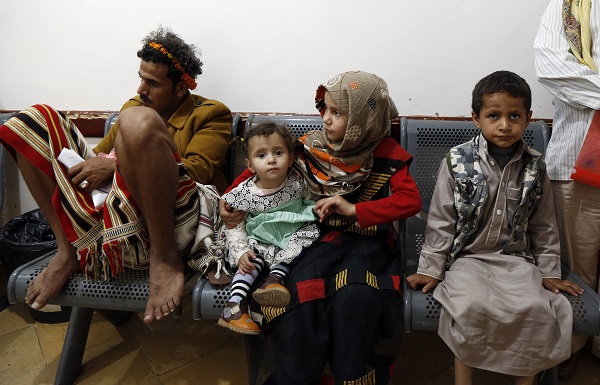
United Nations, (Samajweekly) UN Undersecretary-General for Humanitarian Affairs Mark Lowcock warned on Thursday that the world body will have to close 31 of its 41 aid programs in Yemen in a few weeks as a result of lack of funds.
“This means we will have to start eliminating many of the activities that may offer Yemenis’ best chance to avoid COVID-19,” Lowcock told the Security Council in a virtual briefing on Thursday.
The UN Children’s Fund (Unicef) will have to stop immediate assistance for families displaced by conflict or natural disasters.
That means up to 1 million displaced people would not receive critical supplies, including hygiene items that help protect against diseases like cholera and COVID-19, he said.
Nutrition programs will also be cut, affecting 260,000 severely malnourished children and 2 million more children with moderate malnutrition.
These children’s immune systems will be weakened, making them much more vulnerable to COVID-19, cholera and other diseases, he warned.
People who do fall sick are likely to find fewer clinics to help them. The World Health Organization estimates that 80 per cent of health services provided through the response could stop at the end of April, said Lowcock.
The humanitarian community — UN agencies, international NGOs and others — believes that the world’s largest aid operation cannot afford extended cuts during this unprecedented emergency, said Lowcock.
UN agencies estimate they need more than $900 million to carry them through July for Yemen, he said.
He thanked Saudi Arabia for pledging $500 million for the UN-led response and $25 million for COVID-19 activities in the war-torn country.
He expressed the hope that these funds can be quickly disbursed so that the programs at risk can continue.
So far, the UN has received about $800 million in pledges and contributions for Yemen this year, compared with $2.6 billion at this time last year, said Lowcock.
The humanitarian operation remains a lifeline for millions of Yemenis. Every month, more than 13 million people across the country get help.
But humanitarian access faces serious impediments in Yemen, said Lowcock.
In the country’s north, access challenges remain severe. Although Houthi authorities have approved 13 aid projects since early March, agencies still have 92 requests pending, including 40 that have been waiting for months to get started, he said.
There are problems in government-held areas as well, including bureaucratic impediments and insecurity.
Humanitarian organizations are still waiting for government officials to approve 43 projects that would assist 2.3 million people.
Civilian casualties continue to rise, with more than 500 people killed or injured in the first quarter of the year.
Since January, at least 60,000 people have fled conflict. Most of them have arrived in Marib, where more than 800,000 displaced people have sought refuge since 2016.
Last week, the country confirmed the first case of COVID-19.
More than five years of war have severely degraded Yemen’s health infrastructure, exhausted people’s immune systems and increased acute vulnerabilities. As a result, epidemiologists warn that COVID-19 in Yemen could spread faster, more widely and with deadlier consequences than in many other countries, said Lowcock.







